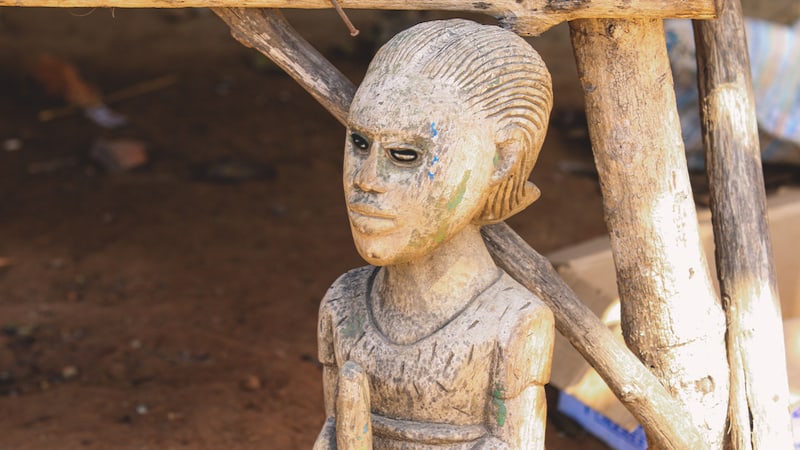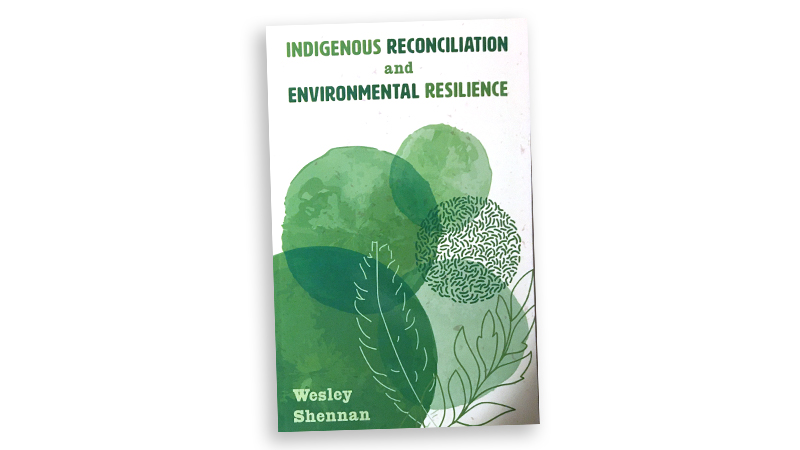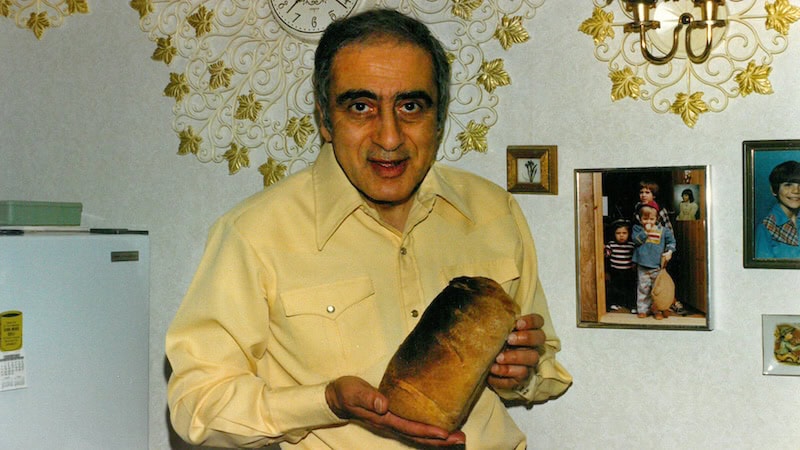Muneco Verde: The Green Voodoo Doll
Some beliefs are based on truth – others on deceit

There may be a world beyond our five senses, and some unprincipled people use deceit to capitalize on that belief. While in Uruguay, Wesley Shennan learned of one such tale of deception, with a voodoo doll as the vehicle.
I believe in the Spirit world. I was only four years old when I met a scary little fellow, shorter than me, in the dark, shadowy hall of an old apartment building in which I lived with my parents. He may have been a gnome, a dwarf or a leprechaun, I don’t really know, but one night I could sense his presence behind me. When I turned around, he looked up at me smiling, but his black hollow eyes weren’t smiling at all. I was instantly filled with terror – running as fast as I could into our little suite. But what’s even more interesting is that I wasn’t afraid to enter the hall after meeting him. I knew he was there, and he wasn’t exactly friendly, but I wasn’t fearful. I accepted that he and I lived there – albeit in different dimensions.
I’m not that different than most. Many believe in a dimension parallel to ours, even more than one. And, it’s not that difficult for me to believe that a medium may be consulted to relay messages from another world. But, it’s also not that difficult for me to believe that this whole concept of channeling messages through a medium can be easily manipulated for monetary gain.
Ricardo’s family was poor, dirt poor. His mother, Marianna, worked as a cleaning lady because the dad had abandoned everyone after the birth of Ricardo’s younger sister, Adrianna. Ricardo never knew his dad; he left when Ricardo was two. Ricardo was a talkative, intelligent little imp, and knew his destiny was way beyond living in a mouldy cement-block cottage in small-town Uruguay. Ricardo did well at school, especially when he had to make a presentation or enter a debate. He loved the thrust and parry of a well-rehearsed argument against an equally prepared opponent. He usually won. He wanted to attend university as soon as he could, as it’s free in Uruguay. Like many in his situation, he dreamed of becoming a lawyer. But he was drawn off track by a tall, elegant creature with pale green eyes and raven hair – Esmeralda.
Esmeralda opened Ricardo to a whole new world – tarot cards. She was commonly known as a bruja (witch in Spanish), or a bruxa, in Portuguese. But bruja is more of a pejorative term. She actually practiced Candomblé, a belief brought to Bahia, Brazil, by African slaves. It’s estimated that between 1.2 and 2 million people were forcibly taken from Africa (many were the Yoruba people of Nigeria, Togo, and Benin) before slavery was abolished in 1850. They first set foot on Brazilian soil in Salvador.
Fundamental to this Candomblé / Afro-Brazilian tradition, are the orixas, spirits linked to nature that are invoked by ‘maes’ (literally a mother, or priestess) and ‘paes’ (fathers/priests). During a ceremony, one may be asked to sacrifice an article of clothing or a household item. These offerings are then given to the sea in respect of the sea’s extraordinary powers over the earth and all who live on it. Rituals are usually conducted in Portunol, a mixture of Spanish and Portuguese spoken in the frontier towns of Uruguay and Brazil. Esmeralda was a mae in high standing.
Ricardo was fascinated with the white turban and purple adornments over the white robes worn by Esmeralda for the mae ceremonies, and her knowledge of Portunol. But he was even more intrigued by the money she was making travelling around the country reading tarot cards for others. When he thought seriously about it, however, he knew he could not do the same thing. He would be competing with Esmeralda and, besides, how many tarot card sessions can be held in one town? And, Uruguay is a small country, too.
Ricardo studied hard and was soon accepted to become a pae. But during his studies he also stumbled upon something new to him, parapsychology. “That’s it!” he said to himself: “I can’t go around the country saying I’m a ‘bruja’ or a ‘pae,’ but I can certainly say I’m a parapsychologist!”
He busied himself with more ritualistic research, practiced his Portunol, and made sure he maintained his important contacts with other paes in the pueblos and towns of Uruguay. (Montevideo he knew was more educated and using his newfound parapsychology on city types would be more difficult.)
He printed high-quality, glossy business cards that clearly stated in the centre: Ricardo Lopez, PARAPSYCHOLOGIST. He fashioned a white turban and dressed in pure white robes (in contrast to Esmeralda’s purple adornments), to make himself distinctive. He used the Portunol because it sounded so exotic. Now, he thought, I need an angle…
The voodoo doll deceit
A few years after he married Esmeralda, he was posing as a medium at the local fair in La Purisima, a town of about 50,000 in central Uruguay, when the idea came to him. An older man approached Ricardo and said his wife wanted to leave him. After finding out the old guy’s address, and of course learning that he had his life savings in the bank, Ricardo started mumbling in Portunol. He eventually came out with: “You’ve been cursed by the local witches. They have buried a green voodoo doll in your garden to keep you in bad luck. Go back to your house, find the green doll and destroy it. Your luck will return – your wife will not leave you.”
He told the old guy that he could not return to his house immediately as it would upset the ‘reading’ Ricardo just channeled. He suggested the old guy go to his favourite pub and return home in four hours. He also said if the green doll was not there, he did not owe Ricardo anything. But if he found a green doll buried in his garden, his luck would take a turn for the better, providing he completed the instructions of the reading by taking Ricardo to the bank to withdraw all his life savings.
Ricardo quickly contacted his local bruja friends on his newly acquired cell phone and asked if they had a medium-sized green voodoo doll. No one seemed to have anything except for Chaco, an older bruja who had not one but two foot-long hand-carved wooded green dolls with menacing black eyes.
“But it’ll cost you,” said Chaco.
Ricardo thought for a while and figured the old guy was good for $60,000 American dollars and said to Chaco: “I don’t have a lot, but if you do a little favour for me and bury the doll in the garden at this address, I’ll give you $100 for that voodoo doll.”
“Okay,” said Chaco, thinking Ricardo was an idiot for paying so much for such a small favour.
It worked. Chaco buried the doll, the old guy found it, and Ricardo made $60,000! ‘This was too good to be true,’ he thought … two days later, he duped another old guy at the fair, made an easy $40,000 … and immediately fled for Mexico with Esmeralda on an extended vacation at Playa del Carmen.
Ricardo never went to jail. The two older gentlemen in La Purisima eventually met in a bar a couple of months later, exchanged their surprisingly identical stories, tracked down Ricardo, and charged him with theft. But they couldn’t prove anything. In fact, they had both willingly withdrawn funds and given the money to Ricardo. While Ricardo was consulting with his lawyer after the trial he said: “Well now that I’m innocent, do you think I can do this in another province in Uruguay?”
His lawyer said: “Look, you’re not genuine, you don’t believe in Candomblé, you just dupe people.”
Ricardo replied: “But people need something to believe in…”
Ricardo’s right, of course. But be careful the next time you’re in Uruguay. Especially if you’re attending a small-town fair and a pae offers to tell your fortune.
Read more childhood memories and other contributions from Boomer readers in our From the Reader department.
Have your own childhood memories or other stories you’d like to share with our baby boomer audience? View our writers’ guidelines and e-mail our editor at Annie@BoomerMagazine.com with the subject line “‘From Our Readers’ inquiry.”
Also from Wesley Shennan: Coral Reefs and Environmental Resilience
Wesley Shennan, a member of the Michel First Nation, Treaty 6, in the area currently known as Alberta, Canada, is a community planner and has been working with First Nations in British Columbia for the past 22 years. His education in both the physical and social sciences, and work experience, has led him to share his understandings and encourage others to take action. He lives with his wife, Elena, in the now smoky and scorching hot Okanagan valley in southern British Columbia – the traditional unceded territory of the Syilx Nations. He is the author of “Indigenous Reconciliation and Environmental Resilience” (FriesenPress, July 24, 2022). “I’m now living in Kelowna and respectfully acknowledge the unceded Traditional Territory of the Syilx (Okanagan) Nations,” Shennan says.
As an Amazon Associate, Boomer Magazine earns from qualifying purchases of linked books and other products.




